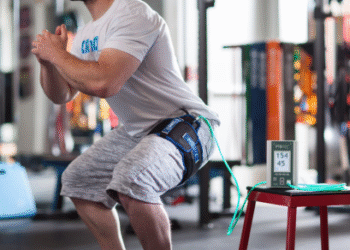Medical equipment for the physically impaired plays a crucial role in improving the daily lives of those with physical disabilities. From mobility aids such as wheelchairs and walkers, to assistive devices like hearing aids and speech-to-text software, these tools help individuals overcome challenges and perform tasks that may otherwise be difficult or impossible. In this article, we will explore the various types of medical equipment available for individuals with physical impairments and how they can enhance quality of life.
When Did Impaired People and People with Disability Started Getting Specialized Medical Equipment for Daily Living?
The use of specialized medical equipment for individuals with physical impairments dates back centuries. In ancient civilizations, such as Ancient Egypt and Greece, there is evidence of prosthetics being used to assist people with mobility impairments. However, it was not until the mid-20th century that advancements in technology and an increased understanding of disability led to the development of more efficient and effective medical equipment. This allowed individuals with physical disabilities to have greater independence and participation in society.
How Much Have Medical Equipment for Disabled/Impaired People Improved?
The advancements in medical equipment for individuals with physical impairments have been significant and continue to improve. From manual wheelchairs to motorized scooters, the options for mobility aids have expanded greatly. There are also many assistive devices available that cater to specific needs, such as voice-controlled home automation systems or braille keyboards for those with visual impairments. These innovations have not only improved the functionality of these tools but also their accessibility and ease of use.
How Has Medical Equipment Enhanced Quality of Life?
Medical equipment for the physically impaired has greatly enhanced the quality of life for those living with physical disabilities. With these tools, individuals can perform daily tasks independently and participate more fully in activities they enjoy. This can improve their mental and emotional well-being, as they no longer have to rely on others for assistance. Furthermore, the advancements in medical equipment have also allowed individuals with physical disabilities to pursue education, employment, and other opportunities that were once limited due to accessibility barriers.
Types of Medical Equipment
There are a wide range of medical equipment options available for individuals with physical impairments. Some common types include:
- Mobility aids: These devices help individuals move around and perform daily tasks independently. Examples include wheelchairs, walkers, canes, and crutches.
- Assistive devices: These tools help improve communication abilities for those with speech or hearing impairments. This category includes items such as hearing aids, speech-to-text software, and Braille keyboards.
- Prosthetics: For those who have lost a limb or are born without one, prosthetics provide the ability to walk or grasp objects like a natural limb would.
- Adaptive furniture and accessories: These items are designed to make daily activities easier for those with physical impairments. Examples include shower chairs, grab bars, and raised toilet seats.
- Orthotic devices: These tools help support joints and muscles in order to improve mobility and reduce pain. Examples include knee braces, back braces, and shoe inserts.
Importance of Medical Equipment
For individuals with physical disabilities, medical equipment is essential for maintaining independence and improving overall quality of life. These tools can help individuals perform daily tasks on their own without relying on others, which can greatly enhance self-esteem and confidence. Additionally, medical equipment can also improve safety by preventing falls or accidents that may occur due to a lack of mobility or impaired movement.
Other cpap equipment for the physically impaired and people with disabilities can be acquired through a major medical equipment distributor. Contact your nearest medical supplier and ask for the specific medical equipment that your doctor recommended.
Choosing the Right Equipment
When it comes to selecting medical equipment for a physically impaired individual, it is important to consider their specific needs and preferences. Some factors to keep in mind include:
- Type of disability: The type and severity of the physical impairment will determine which types of medical equipment would be most beneficial.
- Daily activities: Consider what tasks the individual needs assistance with or struggles to perform on their own. This can help determine which specific devices or aids would be most helpful.
- Lifestyle and environment: Factors such as living arrangement, work/school environment, and hobbies should also be taken into consideration when choosing medical equipment.
- Personal preferences: It is important to involve the individual in the decision-making process and take into account their personal preferences for comfort, style, and functionality.
Maintenance and Upkeep
Proper maintenance and upkeep of medical equipment is crucial to ensure its effectiveness and longevity. It is important to follow manufacturer instructions for cleaning, storage, and replacement of parts. Regular maintenance check-ups may also be necessary to identify any issues or repairs that need to be made. Additionally, it is important to communicate with healthcare providers if there are any changes in the individual’s condition that may require adjustments to their equipment.
Funding for Medical Equipment
The cost of medical equipment can vary greatly depending on the type, brand, and features. In some cases, insurance coverage or government programs may help cover the cost. It is important to research and explore different funding options available for medical equipment, such as Medicare, Medicaid, or private insurance plans. Non-profit organizations and charities may also provide assistance with acquiring necessary medical equipment.
Medical equipment for the physically impaired plays a critical role in promoting independence and improving overall quality of life for individuals with physical disabilities. By understanding the different types of equipment available, considering individual needs and preferences, properly maintaining the equipment, and exploring funding options, individuals can greatly benefit from these tools and enhance their daily functioning. So even though having a physical impairment may present challenges, there are many resources available to help individuals live full and independent lives.













